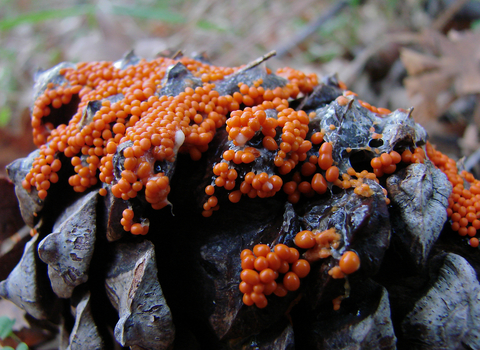Slime moulds are SUPER WEIRD!
For years they were thought to be fungi but they’re actually something different. Check out these wonderfully weird things…
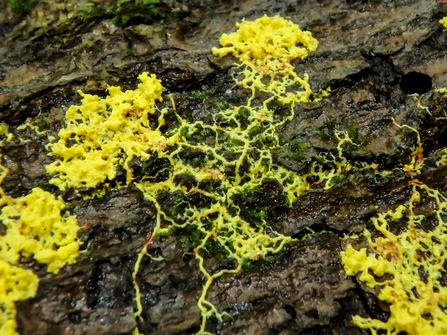
© Allen Norcross
Many-headed slime mould
Although it doesn’t have a brain, the ‘many-headed’ slime mould is a great puzzle-solver. When two meals are on offer, this amazing slime mould finds the shortest route between them. If it is offered more than two options, it sets up a network – a bit like the London underground system – so that it can move around the different feeding spots as quickly as possible!
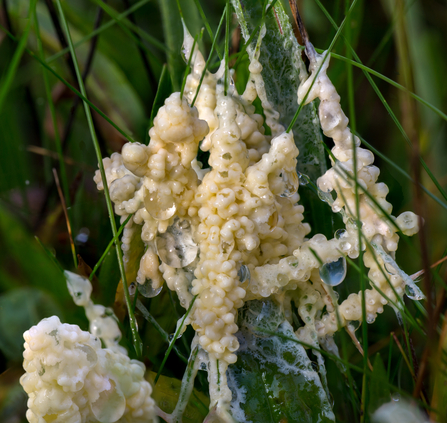
© Derek Parker
Dog sick slime mould
Discovered suspicious white stuff that looks like dog sick in your back garden, but not got a dog? Well it could be the dog sick slime mould! It can turn up on grass overnight and is most common in September. It doesn’t stick around though! After one night it will turn black, and it will have disappeared in a couple of days, especially if it’s rained.
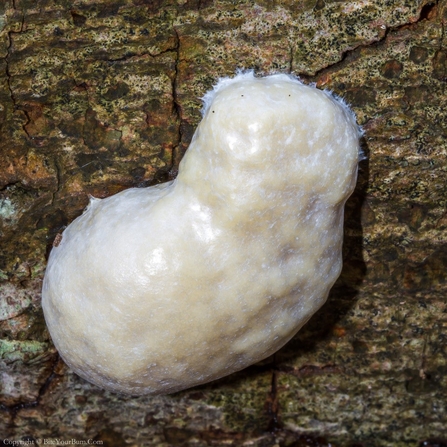
© James & Dawn Langiewicz
False puffball or cauliflower slime mould
Did you know that young slime moulds can actually move around in search of food? This is one big difference between them and mushrooms. To be fair, a young false puffball is difficult to tell apart from a puffball (mushroom). If you return to the same spot a day later and it has changed shape, it’s probably a slime mould.
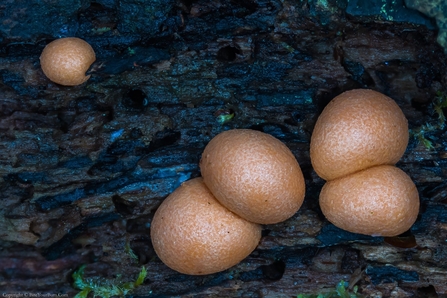
© James & Dawn Langiewicz
Wolf’s milk
These tiny blobs can be found on dead wood all year round. They can range in colour, from pinky-grey to greenish-black. If you pop one with a small stick, it’ll ooze a brightly coloured toothpaste-like liquid. You don’t want to be putting this on your teeth though, as it’ll do you no good!
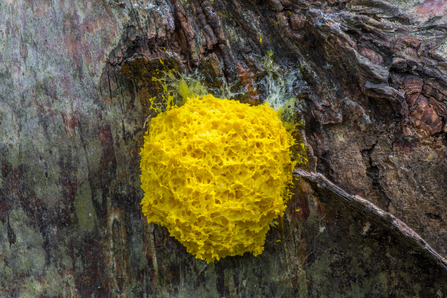
© Derek Parker
Scrambled egg slime
Toxic metals can be poisonous to many living things, but the scrambled egg slime uses its special powers (the yellow pigment that gives it its colour) to make the metals harmless. Look out for this magic slime in your garden this summer after heavy rain. It loves to grow on the wood chips that are often put around plants.
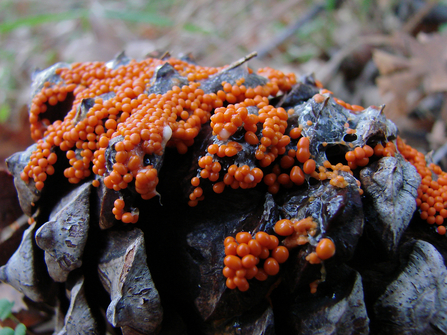
© Ken
Egg-shell slime mould
Found on twigs and sometimes even pine needles, egg-shell slime moulds can look like miniature bunches of grapes. Give them a couple of days and you’ll see why they get their name. They EXPLODE! This releases their spores, which means they can multiply. After this, they look like cracked eggs!

